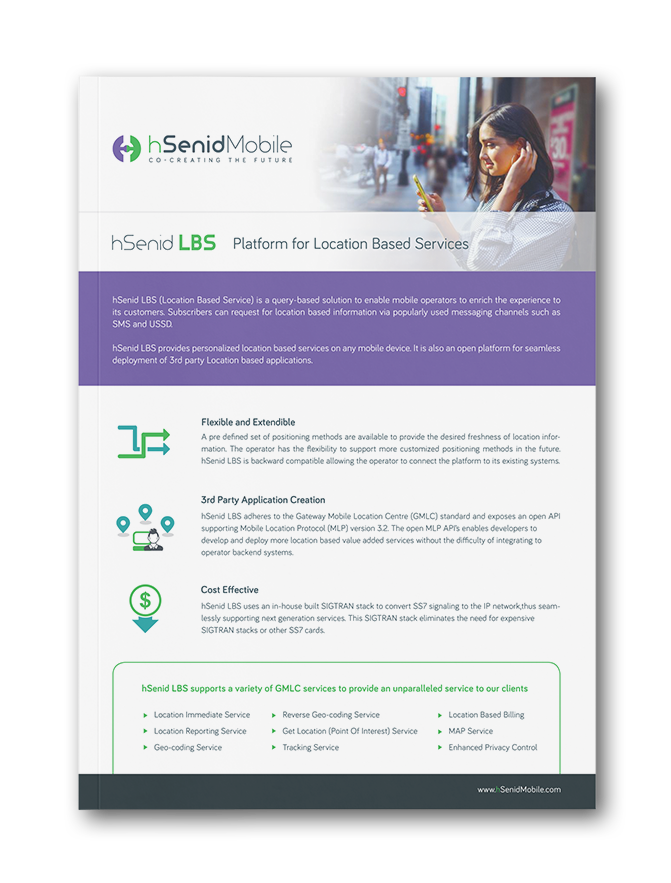Imagine stepping out of a meeting, your phone buzzes, and a coffee shop promotion pops up just around the corner. Convenient? Absolutely. A little creepy? Also, yes. Welcome to the world of SMS location-based service, where the boundary between helpful and invasive is getting blurrier by the ping.
In the telco industry, location-based services (LBS) have evolved from gimmicky “you’re near a pizza place” texts to full-blown engagement ecosystems. But with great geo-power comes great responsibility. And the big question for operators today isn’t just about offering precision, it’s about offering trust.
And telcos love it. Why wouldn’t they? It’s a smart, scalable way to deliver hyper-local, real-time messaging. A well-targeted LBS campaign can boost customer engagement, increase ARPU (average revenue per user), and even open up new revenue streams via partnerships with retailers and brands.
But… there’s always a “but,” right? The challenge is adoption. Despite its potential, LBS often gets sidelined—either due to legacy infrastructure, privacy concerns, or a lack of compelling use cases presented to marketers. Many brands still don’t realize how precisely they can engage users when location data is used responsibly. That gap between potential and execution is what’s holding LBS back. And it’s also where the biggest opportunities lie.
Take hSenid’s LBS solution, for example. It enables telecom operators to offer services like “find the nearest coffee shop” or deliver geo-targeted alerts to people within a specific city limit. Integrated with SIGTRAN, MLP interfaces, and customizable positioning methods, it offers everything from simple push notifications to complex user-behaviour analytics.
The beauty lies in the blend—combining intelligent delivery via charging gateway interfaces with real-time, location-aware SMS outreach.
In a word, yes. But it’s more nuanced than that.
Most location-based service platforms don’t track users individually by default. Instead, they work with anonymized, aggregated data. For instance, a campaign might target all subscribers within 500 meters of a stadium, without ever needing to identify “John in seat A23.”
That’s not informed consent. That’s checkbox compliance.
And while countries like those under GDPR have made real strides in enforcing user privacy, plenty of regions are still figuring it out. The result? A digital gray zone where your location might be tracked even if you didn’t explicitly say yes, just because you didn’t say no loudly enough.
That starts with clear consent, not fine print, but real opt-ins with real explanations. Then there’s data minimization: collect only what you need, keep it for as little time as possible, and don’t pass it around like candy at a trade show.
Also, don’t forget the power of transparency. If you’re tracking someone’s location, tell them. Not with jargon, but in plain language. That’s not just good ethics—it’s good branding. People trust companies that treat them like adults.
We’ll see new forms of location-aware messaging, from augmented reality overlays to IoT-powered city services. Predictive analytics will anticipate needs before users even articulate them. And yes, location-based service will still have a vital role in that mix, thanks to its reliability, simplicity, and reach across all mobile devices (even feature phones).
Telcos stand at a unique crossroads. They hold the infrastructure, the data, and the trust of millions. The opportunity? To be champions of ethical LBS—turning proximity into personalization without crossing privacy lines.
For telcos, the line between surveillance and service is thin. The real challenge is staying on the right side of it—not just legally, but ethically. Because in the end, trust is the strongest signal you can send. That’s something even the best triangulation method can’t fake. If your business is ready to deliver more relevant, engaging, and timely user experiences, hSenid’s LBS platform is your launchpad. It’s scalable. It’s modular. And it’s built for what’s next. Ready to elevate your location game? Learn more about hSenid’s Location-Based Services and start building smarter connections today.
In the telco industry, location-based services (LBS) have evolved from gimmicky “you’re near a pizza place” texts to full-blown engagement ecosystems. But with great geo-power comes great responsibility. And the big question for operators today isn’t just about offering precision, it’s about offering trust.
What Is SMS Location-Based Service?
At its core, a location-based service uses mobile network data to determine a user’s approximate location and send them tailored content via SMS. This could include promotional offers, emergency alerts, service updates, or navigation assistance. Unlike app-based tracking, which typically relies on GPS and user permissions, SMS LBS can function through the telecom infrastructure itself, meaning it’s faster, doesn’t drain the battery, and doesn’t require user-installed apps.And telcos love it. Why wouldn’t they? It’s a smart, scalable way to deliver hyper-local, real-time messaging. A well-targeted LBS campaign can boost customer engagement, increase ARPU (average revenue per user), and even open up new revenue streams via partnerships with retailers and brands.
But… there’s always a “but,” right? The challenge is adoption. Despite its potential, LBS often gets sidelined—either due to legacy infrastructure, privacy concerns, or a lack of compelling use cases presented to marketers. Many brands still don’t realize how precisely they can engage users when location data is used responsibly. That gap between potential and execution is what’s holding LBS back. And it’s also where the biggest opportunities lie.
LBS: The Telco Goldmine
Before we talk about risk, let’s talk about rewards. Here’s how telcos are deploying location-based service tools:- Customer segmentation: Target users in specific areas based on movement patterns.
- Geo-fencing: Send messages when users enter or exit designated zones.
- Emergency alerts: Deliver critical safety updates to anyone in a crisis zone.
- Retail partnerships: Collaborate with brands like KFC or supermarkets to drive footfall.
Take hSenid’s LBS solution, for example. It enables telecom operators to offer services like “find the nearest coffee shop” or deliver geo-targeted alerts to people within a specific city limit. Integrated with SIGTRAN, MLP interfaces, and customizable positioning methods, it offers everything from simple push notifications to complex user-behaviour analytics.
The beauty lies in the blend—combining intelligent delivery via charging gateway interfaces with real-time, location-aware SMS outreach.
The Privacy Elephant in the Room
Now, let’s address what everyone’s thinking but not saying out loud: Are these services watching us?In a word, yes. But it’s more nuanced than that.
Most location-based service platforms don’t track users individually by default. Instead, they work with anonymized, aggregated data. For instance, a campaign might target all subscribers within 500 meters of a stadium, without ever needing to identify “John in seat A23.”
The Consent Illusion
Here’s where things get a little murky. Most companies will tell you they “only send messages to users who opt in.” Technically, true. But “opting in” can mean checking a box buried in a 37-page terms-of-service agreement. Or tapping “Accept” on a permissions pop-up you didn’t fully read while rushing to download a coupon.That’s not informed consent. That’s checkbox compliance.
And while countries like those under GDPR have made real strides in enforcing user privacy, plenty of regions are still figuring it out. The result? A digital gray zone where your location might be tracked even if you didn’t explicitly say yes, just because you didn’t say no loudly enough.
Can We Do Better?
Absolutely. A well-designed sms location-based service doesn’t need to be shady. In fact, with a few responsible choices, it can be both effective and respectful.That starts with clear consent, not fine print, but real opt-ins with real explanations. Then there’s data minimization: collect only what you need, keep it for as little time as possible, and don’t pass it around like candy at a trade show.
Also, don’t forget the power of transparency. If you’re tracking someone’s location, tell them. Not with jargon, but in plain language. That’s not just good ethics—it’s good branding. People trust companies that treat them like adults.
The Future of LBS in Telecom
Location-based services aren’t going anywhere. In fact, with the rise of 5G and edge computing, they’re about to get a lot more precise—and powerful.We’ll see new forms of location-aware messaging, from augmented reality overlays to IoT-powered city services. Predictive analytics will anticipate needs before users even articulate them. And yes, location-based service will still have a vital role in that mix, thanks to its reliability, simplicity, and reach across all mobile devices (even feature phones).
Telcos stand at a unique crossroads. They hold the infrastructure, the data, and the trust of millions. The opportunity? To be champions of ethical LBS—turning proximity into personalization without crossing privacy lines.
In Conclusion: Watchers or Enablers?
So, are sms location-based services watching you? Technically, yes, but hopefully with your permission and to your benefit.For telcos, the line between surveillance and service is thin. The real challenge is staying on the right side of it—not just legally, but ethically. Because in the end, trust is the strongest signal you can send. That’s something even the best triangulation method can’t fake. If your business is ready to deliver more relevant, engaging, and timely user experiences, hSenid’s LBS platform is your launchpad. It’s scalable. It’s modular. And it’s built for what’s next. Ready to elevate your location game? Learn more about hSenid’s Location-Based Services and start building smarter connections today.








